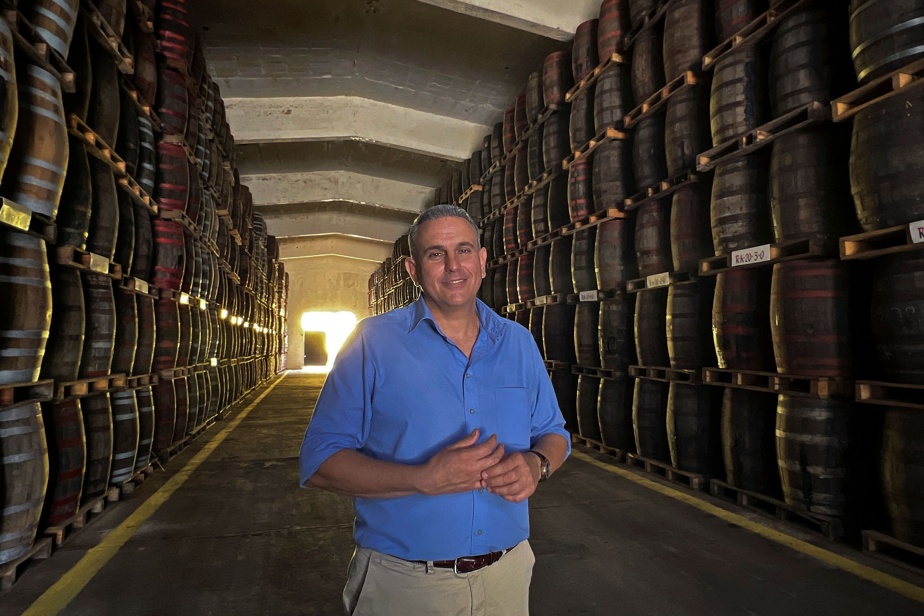(Santo Domingo) Every morning, the Cuban master rum maker César Marti feels the same intense pleasure when he opens the doors of the cellar of the “Central Rhumerie” of Santo Domingo (center) where for twenty years he has preserved a century-old know-how inscribed since little to the intangible heritage of humanity.
The walls of the aging cellar are lined with barrels up to the ceiling. In the air floats an enveloping smell that combines scents of sugar, spices, ripe fruit and alcohol.
A unique and changing fragrance that daily delights the master rum maker, never jaded despite the years in this state factory in the center of the country, located 270 km south-east of Havana.
“This is where the oldest rums and eaux-de-vie from central Cuba rest patiently,” proudly explains César Marti, showing the American oak barrels in which the eaux-de-vie and blends naturally age ( mixtures of several of them), sometimes for more than seven decades.
At 46, this Cuban with a frank smile is the custodian of a centuries-old tradition that was refined in the 19th century when the first modern stills were introduced on the largest island in the Caribbean where the sugar mills were running at full capacity.
Cuban rum then asserts its uniqueness: 100% made from molasses (residue from sugar manufacturing), short fermentation, discontinuous distillation and an alcohol content rarely exceeding 40 degrees, giving a so-called “light” rum.
Exotic travel
The Cuban master rum makers have since then been the guardians of this tradition: “selecting the best molasses, producing the eau-de-vie, overseeing the blends, the ageing”, explains Mr. Marti, who recalls how much “rum is a product extremely complex to develop”.

PHOTO ADALBERTO ROQUE, AGENCE FRANCE-PRESSE
Today, there are a total of two “first master rum makers”, considered to be the most experienced, seven master rum makers, including two women, and five “apprentices”, all dispersed in the various state factories in the country.
Each has been rigorously co-opted. If a university background in science is now a prerequisite, particularly for improving technical processes, oral transmission remains fundamental through daily work within the factory.
This is where César Marti, who worked at the distillery after scientific studies and a childhood in the middle of the sugar cane fields, was spotted by the master rum maker at the time. He then became an “apprentice” for nine years, before being appointed master in turn.
Twelve years of practice and a scientific thesis later, he became at 44 the youngest Cuban “First master rum maker”. A career that has not escaped the notice of the French luxury giant Louis Vuitton Moët Henessy (LVMH), which asked him to create an exclusive Cuban rum now marketed in several European countries.
Because being a master rum maker also means “creating new products”. Smell of wet grass, fruity or floral flavors… you have to find the perfect blend so that the consumer can feel “a journey through the Cuban countryside”.
Always more in love
This know-how, César Marti is now committed to transmitting it to Mitehel Niebla Lago, 42 years old. “Apprentice” for seven years, he held several positions in the factory where the master discreetly observed his sensory qualities and his personal commitment, before suggesting that he take his first steps in the brotherhood.

PHOTO ADALBERTO ROQUE, AGENCE FRANCE-PRESSE
Cesar Marti and Mitehel Niebla
“It was there that I began to understand how important it was for our country that we are the guardians of a tradition passed down through eight generations,” says the apprentice.
Today, to perfect his training, he concentrates on “the cultural part (of rum), its history”. And is delighted, over the knowledge and responsibilities acquired, to “fall ever more in love” with this tradition.
For César Marti, the role of the master rum maker is to “assimilate with humility” the techniques, the history, the sensory diversity of the eaux-de-vie bequeathed by the predecessors and “to be generous” with the successors so that they can continue to pass on this heritage.
Among this legacy is also a “code of ethics”: if each master rum maker is attached to a factory and a commercial brand, all defend the quality and durability of Cuban rum. “Threats of climate change, sugar cane cultivation, international standards”, so many subjects that occupy their regular meetings.
Without forgetting its influence, crowned in November by the inclusion of this tradition on the list of intangible heritage of humanity by UNESCO. A first for a rum in the world.
